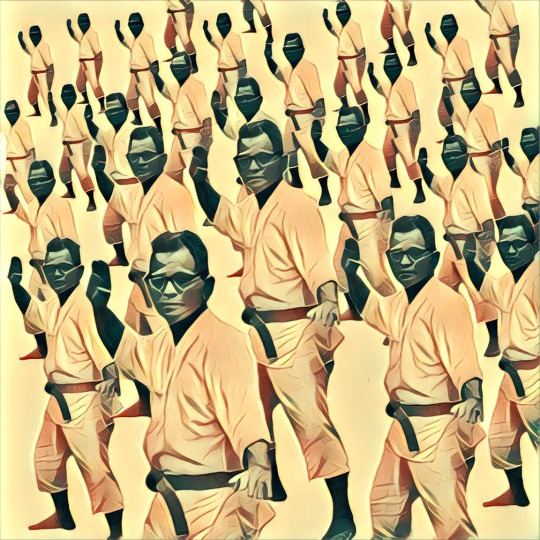As a career kata practitioner and teacher, I can tell you
there is a certain developmental arc to learning any new martial pattern. The
first challenge is to simply memorize the sequence taught to you. Don’t worry
about any kata nuances until you’ve gotten the gross pattern down. In beginning
kata training, which can seem very mechanical, simply try to mimic the pattern
shown the best you can. In the hierarchy of values regarding form practice, ‘form’
itself should be the main focus. Speed and power should come later on.

Kata is a process,
not just a bunch of cool fighting moves. There are three primary dimensions to
kata study; solo practice, application practice (using a sequence against a
partnered attack) and what we call jiu-kumite
(free sparring). Each dimension serves to ‘authenticate’ or ground kata moves
in reality.
At the early stages of Traditional kata work most martial
artists lack a strong template for proper training. There are five layers to
training and usually only three of them are addressed consciously. The last two
remain somewhat ambiguous to most kata teachers. Those five layers are;
development of the Tools, Tactics, Strategy, State of Mind and Subtle Energy
patterns. I’ve provided an audio link below for anyone wishing to hear more
about the five layers of kata.
https://soundcloud.com/chris-goedecke/the-many-shapes-of-form
Studying multiple martial arts simultaneously can be a bit
confusing depending upon the different arts selected. First, consider that
martial arts can be divide into many different categories, Soft Style/Hard
Style, Ballistic/Grappling, Close range/Long range, Slow moving/fast moving
(for example, Tai Chi versus Karate) Competitive/Non competitive, Material
objective-based/Spiritual objective-based, etc.
A simple way to think about it is to imagine all the martial
art knowledge in the world like a mountain. There are a lot of trails one could
take. Not all will get you to the top. And ‘top’ is subjective, a matter of
opinion. In the same way, it is suggested when buying a computer, to think of
the kind of programs you want to run, then pick the computer that runs them
best, reflect on what it is you’d like to get out of the martial arts and what
kind of movement attracts you, then do some research to see what style or
system best fits your interests or matches your goals.
Martial art is a process
available to anyone at any age. However, some martial styles are more age
appropriate than others. Full contact cage fighting is not a good choice for an
eight or eighty year old. But people do surprise.
Forty is actually a terrific age. The body is still strong
and pliable enough to change, depending upon your constitutional health and
physical integrity, that is, relatively disease and injury free. I’ve worked
with a fair amount of students in their 40-60’s. I’ve seen some remarkable
growth. I taught one student years ago who began karate training with me at age
forty-four. He made 5th degree black belt and retired from training
at age 79. He loved every minute of it.
The one primary consideration that must be attended to by the older martial artist, to avoid injury or
setback, is to build skills at an appropriate rate of training for your age, health,
and fitness level. You’re not twenty. And you’re not turning the clock back,
but you’d be surprised how much skill you can pick up if you have a good
teacher and stick with it.
